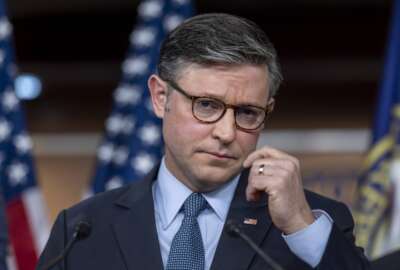DoD to streamline IT acquisition
A Congressionally-mandated report issued by the Defense Department finds the acquisition and budget processes being used for IT were designed for major weapons...
By Jared Serbu
Reporter
Federal News Radio
The Defense Department intends to move to a new streamlined, departmentwide acquisition and appropriations process for information technology. It’s a move that senior officials believe will give the Pentagon the agility needed to keep pace with the evolution of technology.
The process was outlined in a 19-page report mandated by the 2010 Defense Authorization bill, and was first reported by Fierce Government IT.
The report, signed by Deputy Secretary of Defense William Lynn, found many of the changes DoD intends to make can be accomplished under existing law or have already begun. But the department would need Congress’ help to implement their proposed reforms to the appropriations process for IT projects.
The DoD report follows closely the Office of Management and Budget’s plan to reform technology among civilian agencies. OMB announced a 25-point plan last week calling for agile or modular development, more flexible budget processes and more oversight over IT projects.
The House Armed Services Committee also recommended major changes to the way DoD buys goods and services earlier this year. Many of the changes are focused on the differences between IT and weapons systems.
DoD currently funds IT projects through three distinct appropriations: research and development, procurement, and operations and maintenance. The report’s authors noted that the funding models and acquisition rules surrounding those budgets were designed for 20th century weapons systems rather than rapidly-developing information technology. The report suggested a more flexible model that takes into account the fact that some IT needs have to be custom-developed, and some can be purchased off-the-shelf.
“The funding appropriation would have the flexibility for development, procurement and operations and maintenance to permit funding a range of potential IT materiel solutions based on a sound business case,” the report stated.
Alternatively, DoD is considering how a non-expiring revolving fund for IT would work. The report stated Congress would retain the ability to control the types of projects that could be paid for out of the fund, but DoD officials would authorize specific programs and notify Congress after the fact.
The authors also mention a third option that would require the Pentagon to create spending plans that identify desired IT capabilities instead of authorizing specific programs. In that model, the report stated DoD would gain the flexibility to shift funding to projects after the services demonstrate they have developed a sound business case.
“Consistent funding of multiple IT projects will provide better schedule planning for delivering IT capability, better change responsiveness by rapid adjustments across interrelated projects, and a stabilizing influence in an otherwise dynamic IT environment,” the report stated. The report states Defense officials would request Congressional authorization to conduct a pilot project using the new funding models before any proposal to use one of the new models for all IT acquisitions.
The report also proposed a move to short-duration, time-definite IT projects as opposed to multi-year acquisition processes for major systems. It characterizes the new procurement philosophy as “incremental.”
“Projects will be executed in a time-boxed manner to closely match the commercial IT development cycle and deliver capability more rapidly to the department … Major traditional program phases, milestones, and accompanying program reviews will be restructured or replaced and will include refashioned milestone reviews conducted more frequently as in-process reviews at key decision points within the integrated governance structure,” the report stated.
(Copyright 2010 by FederalNewsRadio.com. All Rights Reserved.)
Copyright © 2025 Federal News Network. All rights reserved. This website is not intended for users located within the European Economic Area.





